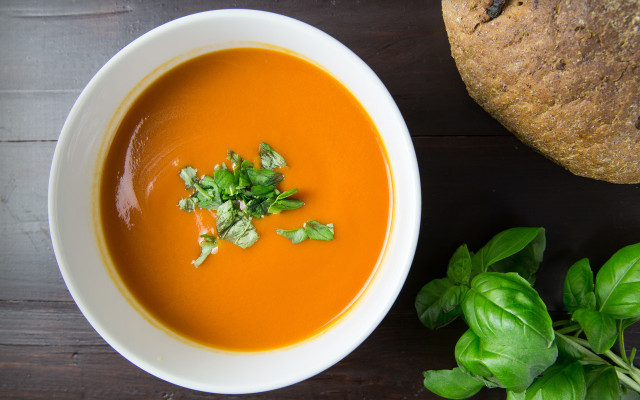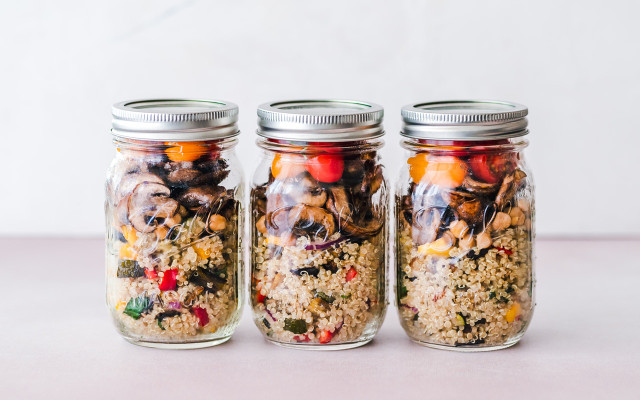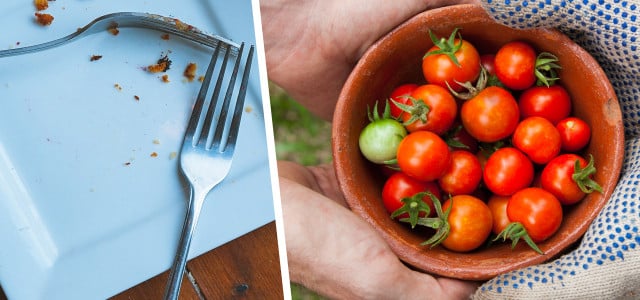Freezing soup is a great way of stockpiling. You can cook it in larger batches and then freeze it in portions. We’ll look at how to freeze soup and what you should pay attention to.
If you want a quick, yet home-cooked meal, stored frozen soup is just the thing for you. Freezing soup will ensure you have nutritious, healthy, and home-cooked meals on hand. At the same time, you’ll also avoid excess waste from cans, bags, or take-out containers.
We will show you the three best ways to freeze soup and what you should keep in mind when doing so.
Freezing Soup: How it Works

Still wondering if you can really freeze soup? Of course you can! Just keep the following tips in mind:
- Always let the soup cool down well before you freeze it.
- Freeze small portions so that you have the perfect portion size after defrosting.
- Label your freezer containers so you know which soup is inside.
- Write the date on the container as well in order to help you keep track of what’s in your freezer
If you’re planning to freeze soup, these ones are among the easiest ones to freeze:
- Clear broth
- Pureed vegetable soups
- Pea soup
- Lentil soup
Tip: Bigger vegetables such as pumpkin, zucchini, or cauliflower are great for making large quantities of pureed vegetable soup.
Remember: For your soup, buy seasonal, organic and local vegetables — these have the best flavor because they’re sold when they are at their ripest. Seasonal vegetables are one of the pillars of any balanced meal and you also support the climate by avoiding long transport routes.
How to Freeze Soup: 3 Methods
1. Glass Jars



All those leftover jars from pasta sauce, peanut butter, jam, or maybe even your own canning and preserves come in handy when it comes to freezing soup!
- Let the soup cool down before you pour it into the jar so the glass doesn’t shatter
- A stainless steel funnel and a ladle will help you fill the soup into the jars
- Fill the jars up to about 80% capacity so the soup has room to expand when freezing
- The narrower the jar, the wider the rim must be
- Only use jars that you can store upright in your freezer in order to avoid spilling and leakage
- Place the lid loosely on the jar so air can escape during the initial freezing which prevents shattering
- Wait at least 24 hours before sealing the jar fully
Read on: Freeze Foods without Plastic: 6 Sustainable Household Hacks
2. Freezer Containers
You can use a variety of different containers when it comes to freezing soup. Glass or stainless steel are your most eco-friendly options, but reusable plastic containers also work. If you’re going down the plastic route, we recommend BPA-free plastic containers.
- Let the soup cool down completely before you put it in the container
- Fill the container up to about two finger widths below the rim so that the soup can expand
- Close the container tightly with the lid
- Place the freezer container flat in the freezer so that the soup does not leak out during the freezing process
Tip: The benefit of using plastic containers is that you can defrost them quickly in warm water.
3. Ice Cube Tray



So many dishes taste better if you add some stock, be it beef, chicken, fish or vegetable. It’s best to use an ice cube tray to freeze stock so you can pop out the right number of ‘stock cubes’ for your recipe.
- As with every method, let the soup cool completely before you put it in the ice cube tray
- Place the ice cube tray on a wooden cutting board to prevent spilling – especially with flexible silicone ice cube trays
- Fill the ice cube tray to just below the edge, you don’t need to worry about leaving extra space for it to expand because there’s no lid
- Place the ice cube tray and cutting board flat in the freezer so the liquid doesn’t spill out during the freezing process
- After about 24 hours, you can take out the cutting board. If you want, remove the stock cubes and place them into a reusable container so they can be used individually, as needed
Tip: You don’t have to defrost the stock cubes before use, they will melt in a hot pot in a few minutes
Shelf-Life of Frozen Soup
Eat your own frozen soup within three months. Clear soups and broths last a little bit longer, but you should eat them within six months of freezing them.
Defrosting Frozen Soup
It is best to take frozen soup out of the freezer the day before and allow it to defrost slowly in the fridge. This step is even more important if you used glass containers! Large differences in temperature can cause glass to crack, so never put ice-cold jars in hot water!
After letting it defrost, warm your soup slowly in a pot. Stir constantly to ensure it doesn’t stick or burn on the bottom of the pot.
Freezing Tips and Tricks
- Don’t pour hot soup into any container, it can deform or shatter them
- Always leave room for expansion, unless you’re freezing cubes
- The narrower the container, the more space you have to leave for expansion
- Freeze things like dumplings and noodles separately from your soup in an airtight container
- With soups that require dairy, freeze them without it and add the cream, milk, or cheese into them when you’re heating them
Now you can enjoy your delicious and nutritious homemade soups all winter long!
This article has been translated from German by Karen Stankiewicz. You can view the original here: Suppe einfrieren: 4 Methoden und welche Fehler du vermeiden solltest
Important Information regarding Health-related Topics.
** Links to retailers marked with ** or underlined orange are partially partner links: If you buy here, you actively support Utopia.org, because we will receive a small part of the sales proceeds. More info.Do you like this post?







